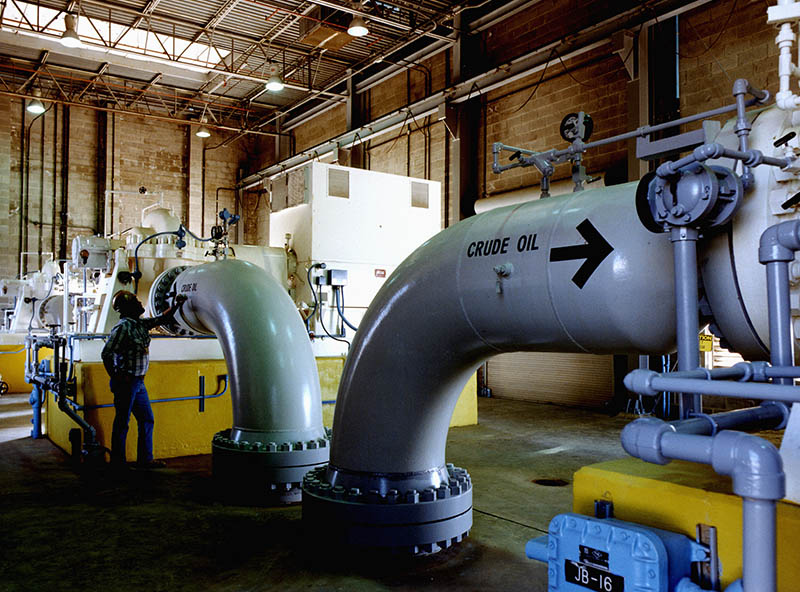(Bloomberg) — Crude retreated for the first time in seven sessions after a government report showed U.S. production climbed to the highest level in more than a year, offsetting data on declining stockpiles.
Futures ended the longest stretch of gains this year in New York. Crude output climbed for an eighth week, the longest stretch since 2012, according to the U.S. Energy Information Administration. Inventories fell 2.17 million barrels, compared with a 1.5 million barrel drop forecast by analysts surveyed by Bloomberg. Prices rose earlier on reports that Saudi Arabia will support an extension to OPEC-led production curbs.
While speculation that the Organization of Petroleum Exporting Countries and its allies will extend their six-month pact aimed at eroding a global glut is helping boost prices, there’s also concern that rising U.S. output will counter the reductions. In its monthly report on Wednesday, OPEC boosted estimates for rival supplies as shale drillers emerge from the industry’s two-year slump.
“Overall supply and demand are coming into balance,” Brian Kessens, a managing director and portfolio manager at Tortoise Capital Advisors LLC in Leawood, Kan., who helps manage $17.1 billion in energy assets, said by telephone. “There’s a little less focus on the weekly inventory numbers and more on OPEC rhetoric.”
West Texas Intermediate for May delivery slipped 29 cents, or 0.5%, to close at $53.11 a barrel on the New York Mercantile Exchange. Prices touched $53.76 earlier, the highest intraday price since March 7. Total volume traded was about 16% above the 100-day average.
Brent for June settlement slipped 37 cents, or 0.7%, to $55.86 a barrel on the London-based ICE Futures Europe exchange. The global benchmark oil climbed the previous seven sessions, the longest stretch of gains since July 2012. Brent closed at a $2.34 premium to June WTI.
Increasing Activity
American crude production rose by 36,000 barrels a day to 9.24 million in the week ended April 7, the most since January 2016. U.S. oil drillers boosted the rig count to 672 last week, the most since August 2015, Baker Hughes data show.
“The market isn’t doing much because we’ve been anticipating a draw,” Adam Wise, who helps run a $7 billion oil and natural gas bond and private equity portfolio at John Hancock in Boston, said by telephone. “The market has had a strong run up and it’s taking a pause before the next move.”
The decline left nationwide crude stockpiles at 533.4 million barrels last week. Inventories at Cushing, Okla., the delivery point for WTI futures and the nation’s biggest oil-storage hub, increased 276,000 barrels to a record 69.4 million.
Refineries processed 16.7 million barrels a day of crude, up 268,000 barrels from the prior week and the highest since January, according to the EIA.
Fuel Stockpiles
Gasoline supplies fell 2.97 million barrels, while inventories of distillate fuel, a category that includes diesel and heating oil, slipped 2.15 million barrels.
“The biggest takeaway is that all three main categories had draws that were bigger than expected,” Kessens said. “Refinery utilization was up and should pick up as we go through the month.”
Saudi Arabia will decide on an extension depending on the stance of other OPEC nations such as Iraq and Iran, as well as Russia, which isn’t a member of the group but joined the output cuts, a person familiar with the kingdom’s internal discussions said.
The kingdom — OPEC’s largest producer — reduced supply below 10 million barrels a day in March, more than pledged under the deal, according to OPEC’s monthly report. The group is scheduled to gather in Vienna on May 25.
Oil-market news:
Compliance among the 11 OPEC members bound by the deal rose to 104% in March, according to the group’s monthly report. Oil prices of $60 a barrel over the next three years and $70-$80 next decade will roughly balance the market, said Ibrahim al-Muhanna, a former senior adviser to the Saudi oil minister and now an independent consultant. Volume in WTI call options, which give the holder the right to buy oil in the future at a set price, surged on Tuesday. More than 61,000 contracts of July $57 call options traded as of 5:19 p.m. in New York, a record for the contract.
Bloomberg News by Mark Shenk





